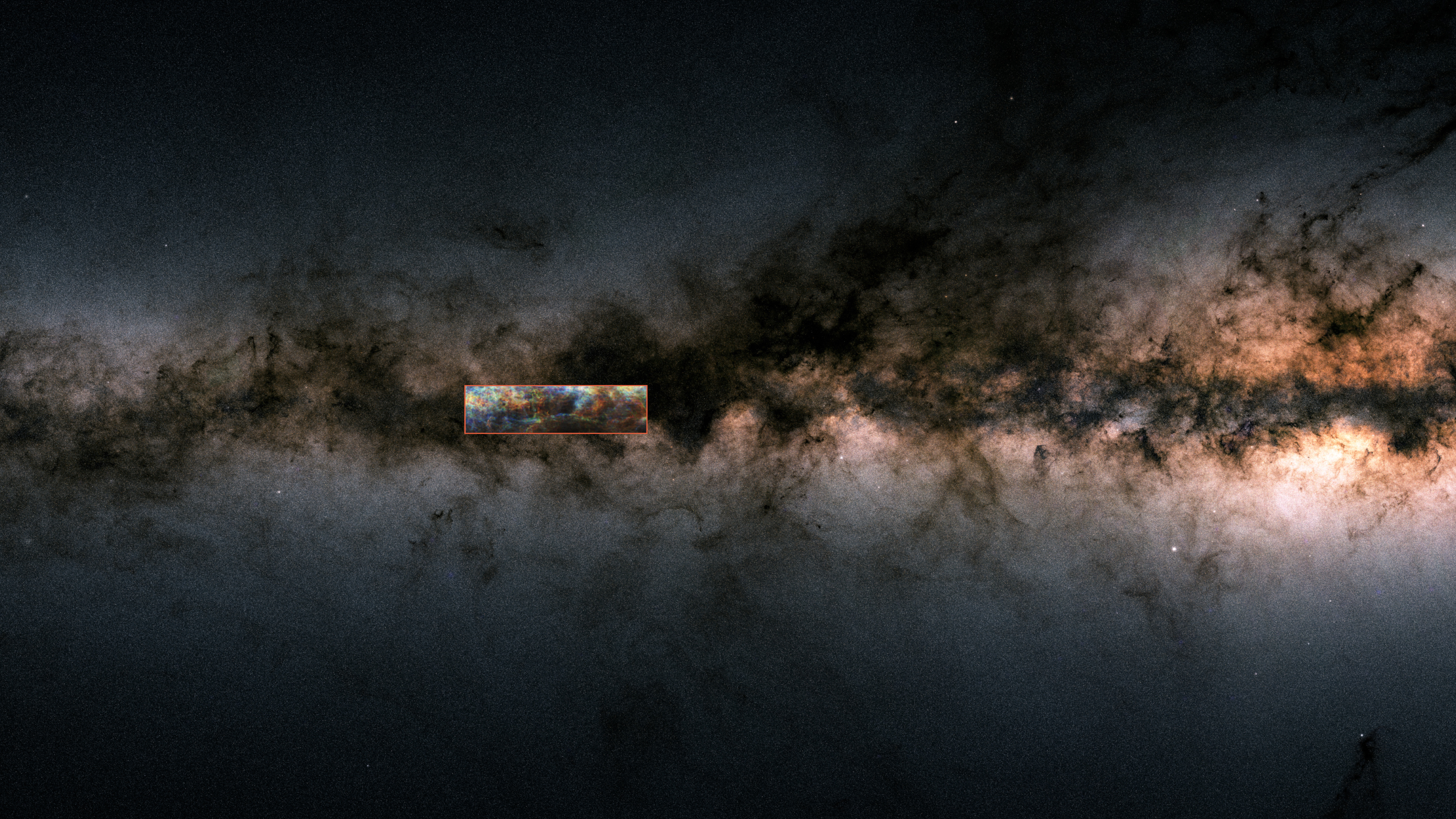Bizarre cloud of gas is one of the longest structures in the Milky Way
Both its size and composition are very unusual.

Astronomers have discovered what may be the longest structure in the Milky Way: an unusual cloud of hydrogen.
The gigantic structure, which is more than 3,900 light-years long and around 150 light-years wide, is located roughly 55,000 light-years away from the solar system, according to a statement by researchers. (Previously, the largest known clouds of gas in the Milky Way were thought to be about 800 light-years across.) The team named the lengthy cloud "Maggie," which is short for the Magdalena River, the longest river in Colombia.
Astronomers discovered the cloud as part of The HI/OH/Recombination line survey of the Milky Way (THOR). The survey, which relies on data collected by the radio observatory called the Jansky Very Large Array in New Mexico, looks for objects outside the main plane of the Milky Way, which is the flattened disk where most matter in the galaxy is found. Because Maggie is located outside that plane, the structure was much easier to spot than it normally would have been.
Related: Cosmic record holders: The 12 biggest objects in the universe

"We don't yet know exactly how it got there," Jonas Syed, a doctoral student at the Max Planck Institute for Astronomy (MPIA) in Germany, said in a statement. "But the filament [gas cloud] extends about 1,600 light-years below the Milky Way plane." Therefore, the radiation from the hydrogen is clearly visible without any real interference, he added.
Because the gas cloud is so isolated, the researchers could calculate the velocity of the gas within Maggie. They found that all the gas was moving at the same speed and in the same direction, which confirmed that it was indeed a single structure and not multiple clouds sitting side by side.
"Maggie was already recognizable in earlier evaluations of the data," co-author Juan Soler, an astronomer at the MPIA who first detected Maggie, said in the statement. "But only the current study proves beyond doubt that it is a coherent structure."
Sign up for the Live Science daily newsletter now
Get the world’s most fascinating discoveries delivered straight to your inbox.
Maggie isn't just bigger than other gas clouds; it's also made up of a unique form of hydrogen. Hydrogen can come in two forms: atomic hydrogen, which is just single atoms of unbonded hydrogen; and molecular hydrogen, H2, which consists of two hydrogen atoms bonded together. Most hydrogen clouds in space consist of molecular hydrogen. However, Maggie is made up of 92% atomic hydrogen, which makes it particularly interesting to researchers.
Most stars form from clouds of molecular hydrogen that become dense enough to collapse under the force of gravity. Researchers suspect that a lot of these clouds of molecular hydrogen may have been made up of atomic hydrogen in the past, but researchers have no way to explain how atomic clouds transition into molecular clouds, which is one of the major remaining mysteries surrounding star formation.
Around 8% of Maggie's hydrogen is molecular and appears to be concentrated into certain points along the cloud. Researchers therefore suspect that Maggie may be in the process of turning into one or more molecular gas clouds.
The team hopes additional data from future studies will reveal more about what is happening.
The study was published online Dec. 20, 2021, in the journal Astronomy & Astrophysics.
Originally published on Live Science.

Harry is a U.K.-based senior staff writer at Live Science. He studied marine biology at the University of Exeter before training to become a journalist. He covers a wide range of topics including space exploration, planetary science, space weather, climate change, animal behavior and paleontology. His recent work on the solar maximum won "best space submission" at the 2024 Aerospace Media Awards and was shortlisted in the "top scoop" category at the NCTJ Awards for Excellence in 2023. He also writes Live Science's weekly Earth from space series.









